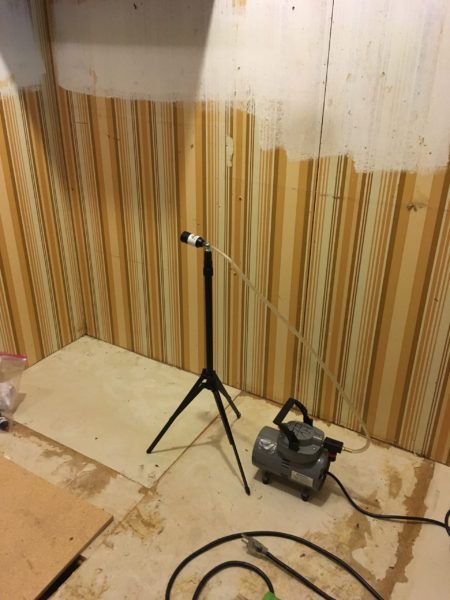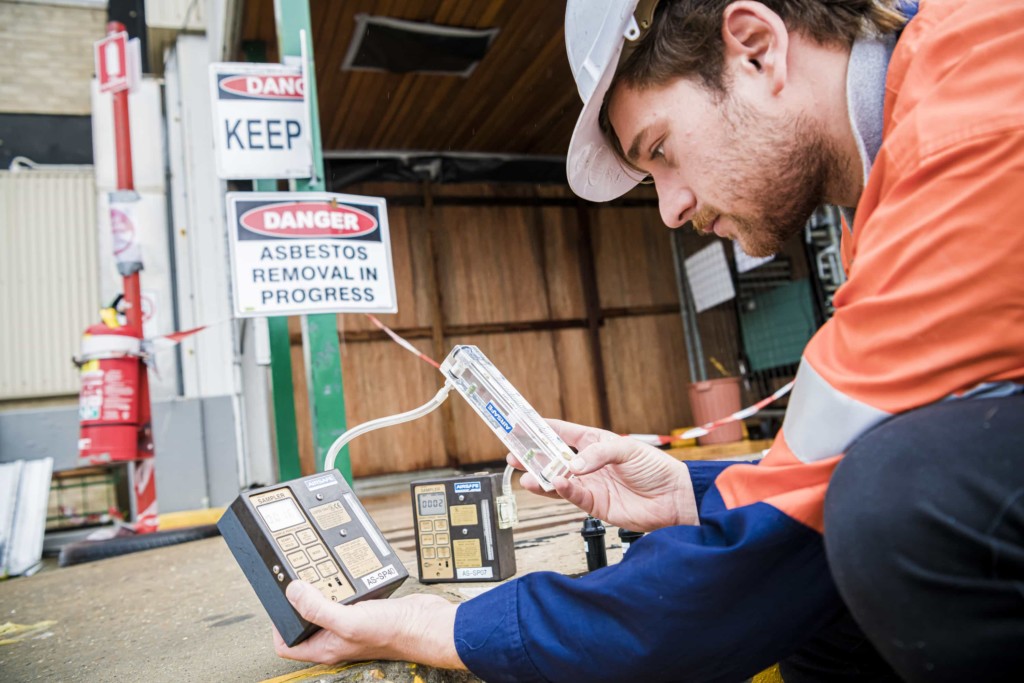Effective Asbestos Air Testing Techniques
Effective Asbestos Air Testing Techniques
Blog Article
Your Guide to Effective Asbestos Testing Procedures
Asbestos screening procedures are an important component of ensuring the safety of indoor atmospheres, particularly in older buildings where this harmful product might be existing. The prospective health and wellness threats connected with asbestos direct exposure make it necessary to come close to screening with precision and thoroughness.
Comprehending Asbestos and Its Threats
Asbestos, a normally occurring mineral known for its warm resistance and sturdiness, postures severe health dangers when its fibers are breathed in or consumed. asbestos inspection near me. Direct exposure to asbestos can cause serious health conditions such as lung asbestosis, cancer cells, and mesothelioma. In spite of its beneficial residential properties, asbestos has been commonly outlawed in several nations because of the proven link in between asbestos direct exposure and these life-threatening conditions
The danger depends on the tiny fibers that can easily come to be airborne when asbestos-containing materials are disrupted or harmed. When inhaled, these fibers can become lodged in the lungs, creating inflammation and scarring in time. The latency period in between direct exposure to asbestos and the growth of relevant illness can extend a number of decades, making very early discovery and prevention crucial.
Asbestos was typically made use of in building materials, insulation, and automotive components prior to its wellness threats were fully understood. Today, correct screening and elimination of asbestos-containing products are crucial to secure individuals from the threats connected with asbestos direct exposure.
Identifying Possible Asbestos Materials
The recognition of possible asbestos products is a vital action in making certain the safety of people revealed to unsafe materials in various atmospheres. Asbestos can be discovered in a vast array of structure products, consisting of but not restricted to insulation, ceiling ceramic tiles, flooring tiles, cement sheets, and roof covering roof shingles - Asbestos Air Sampling. Determining these materials precisely is vital to effectively managing the threats connected with asbestos direct exposure

In instances where visual inspection is undetermined, samples of presumed products can be gathered and sent out to recognized laboratories for screening. These labs use specialized methods such as polarized light microscopy or transmission electron microscopy to precisely determine the visibility of asbestos fibers in the examples. By following extensive identification procedures, people can effectively alleviate the risks related to asbestos exposure.
Selecting the Right Testing Technique
Recognition of possible asbestos products plays a crucial role in identifying the ideal screening method for exact asbestos fiber detection. When presumed products have been identified, picking the best screening approach is necessary to guarantee trustworthy results. There are 2 primary approaches for asbestos testing: polarized light microscopy (PLM) and transmission electron microscopy (TEM) PLM is typically made use of for first screening as it is cost-effective and offers quick outcomes. PLM has limitations in detecting asbestos fibers that are smaller sized than 1 to 3 microns. On the various other hand, TEM is an advanced technique that can precisely determine asbestos fibers at the ultrastructural level. While TEM is a lot more expensive and taxing than PLM, it offers greater sensitivity and specificity in asbestos detection. Choosing the appropriate testing method depends on numerous factors such as the kind of material being examined, the required sensitivity of the analysis, and the offered budget. It is essential to talk to certified asbestos screening specialists to determine the most suitable approach for your certain testing needs.
Performing Sample Collection Securely
When accumulating examples for asbestos screening, focusing on security actions is vital to minimize possible direct exposure dangers. Asbestos fibers are harmful when disturbed, making it critical to adhere to appropriate safety and security protocols throughout example collection - asbestos inspection. Prior to starting the tasting process, ensure that you are outfitted with individual protective tools (PPE) such as disposable coveralls, handwear covers, masks, and safety glasses to stop inhalation or contact with asbestos fibers
It is vital to damp the sampling location utilizing a gentle mist of water to stop the fibers from coming Website to be airborne during collection. Usage care when accumulating samples and prevent hostile scraping or piercing that might release asbestos fibers into the air. Rather, very carefully reduced a small item of the material using proper tools and position it into a sealed container for evaluation by a certified research laboratory.
Additionally, identifying each example with thorough information regarding the sampling location, enthusiast, and day's name is necessary for accurate record-keeping and analysis. By adhering to these safety guidelines, refurbishment survey you can carry out sample collection More Help for asbestos testing properly while decreasing the threat of direct exposure.
Analyzing Examination Results and Next Steps

Final Thought
Finally, reliable asbestos screening treatments are crucial in identifying and taking care of potential health risks connected with asbestos exposure. By comprehending the threats of asbestos, recognizing prospective materials, picking the appropriate screening technique, carrying out example collection safely, and translating examination results accurately, people and companies can take the necessary actions to safeguard themselves and others from the harmful effects of asbestos. It is essential to prioritize security and correct testing protocols to make sure a healthy environment for all.

Recognition of potential asbestos materials plays a vital function in figuring out the ideal screening approach for precise asbestos fiber discovery. The test outcomes will certainly indicate the existence or absence of asbestos, the type of asbestos fibers existing, and the concentration levels.In conclusion, efficient asbestos screening procedures are necessary in determining and taking care of possible health and wellness risks connected with asbestos exposure. By comprehending the risks of asbestos, determining prospective materials, selecting the appropriate testing technique, performing sample collection safely, and interpreting test results properly, organizations and people can take the essential actions to secure themselves and others from the dangerous effects of asbestos.
Report this page